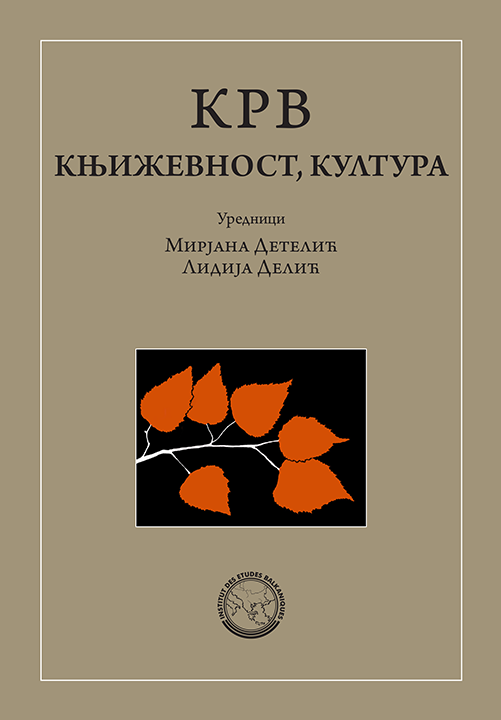News
The Institute for Balkan Studies has just published an edited volume under the title Blood: Literature, culture

The volume Blood: Literature, culture, edited by Mirjana Detelić and Lidija Delić, is the fourth, and the last, in a thematic series inspired by animal studies which, within culture studies and the studies of the categories of power, representation and otherness, have approached animals from a different perspective. The idea of the series was to rely on an interaction of different humanities disciplines in order to present and analyse animals associated with basic spatial coordinates (up : down) and basic elements of nature (air : earth : water : fire) in different arts and different cultural layers. The editors, substituting fire for a related symbolic element and abandoning animals as the common denominator (not animals as a topic!), chose to turn to the motif of blood in myth, folklore, art and literature, in culture in the broadest sense. The resulting volume seems to justify the choice. The research topics cover a broad range of cultures and in synchronic and diachronic projection a broad range of genres (oral, written, film), offering a cross-section of the “history of the idea” of blood in linguistic, mythic and historical memory, discussing some of the key figures of folklore, literature and film initially associated with the Balkans (vampires, Dracula). Various methodological approaches result in a considerably diversified picture of the spheres in which blood figures as a stable symbol and of the ways in which it functions in a system of culture – its interaction with other symbols (wine), its position in the spirit : body (flesh) antinomy, the implications of kinship, sin, guilt, crime (against humans and animals), conscience, its institutionalisation in customary (blood revenge) and judicial practices (trial by blood). Attributes (“black blood”), phraseology, curses and related layers of language idiom petrified, as did mythic-folklore narratives, archaic representations, showing in a very distinctive way how blood is integrated in a broader concept of human cognition.